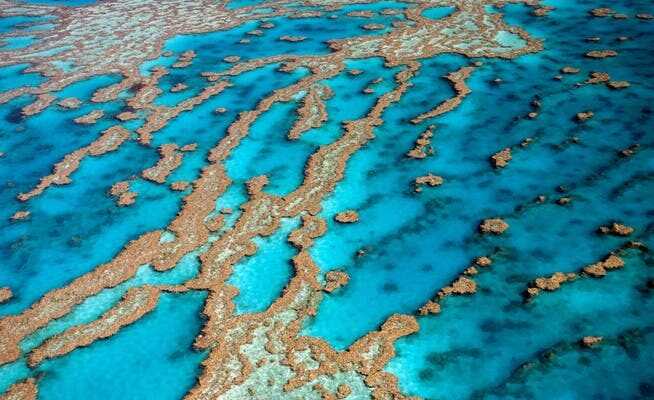The Great Barrier Reef is so massive that it can be seen from space with the naked eye. But the natural wonder is in bad shape: again there is a mass bleaching.
reefs and atolls of the Great Barrier Reef.
(dpa) In the Great Barrier Reef off Australia’s northeast coast, high sea temperatures have once again led to widespread coral bleaching. On 91 percent of reefs, at least 1 percent of the coral cover is bleaching.
The trigger was a month-long heat wave on the fifth continent, according to a new report from the Great Barrier Reef Marine Park Authority – an agency that reports to the government in Canberra. Aerial photographs had shown that of 719 reefs surveyed, 654 exhibited at least partial coral bleaching.
The extremely hot weather has continued to heat up the seawater since December. As a result, the corals are so stressed that they shed the algae that they otherwise live with, which are responsible for the colouration. they fade.
“The investigations confirm a mass bleaching event,” says the report. Numerous reefs are affected in all regions of the 2,300-kilometer-long natural wonder that stretches from Cape York to Bundaberg in tropical Queensland.
It is already the fourth mass bleaching since 2016 and the sixth since 1998, writes the authority. However, she added: “It is important to note that bleached corals are stressed but still alive.” If the water cools, bleached corals can regain their color and survive.
In 2021, UNESCO threatened to put the Great Barrier Reef on the Red List of World Heritage in Danger. However, under pressure from the government, it just barely escaped the downgrade. It will not be discussed again until 2023. Prime Minister Scott Morrison presented a package of measures to protect the Great Barrier Reef in January. A total of one billion Australian dollars (630 million euros) is to be invested in measures to preserve the ecosystem over a period of nine years.
